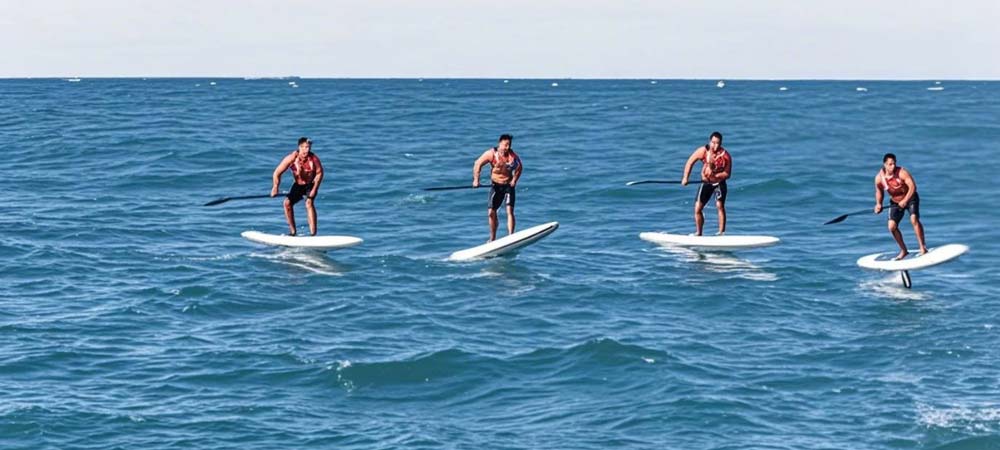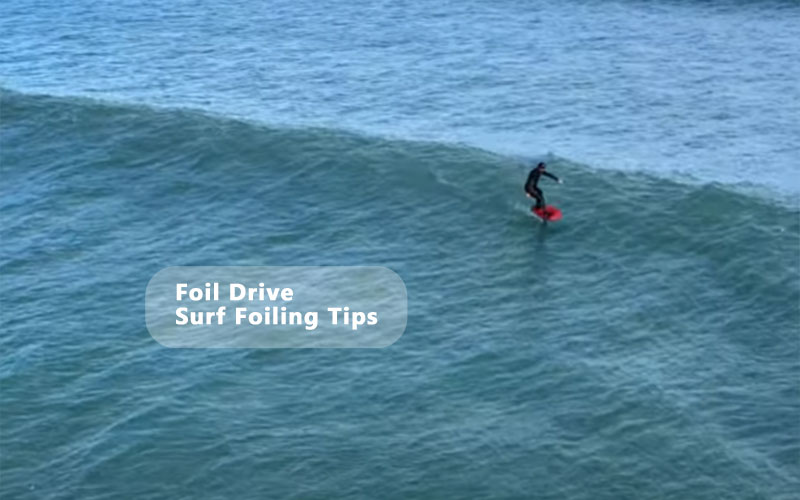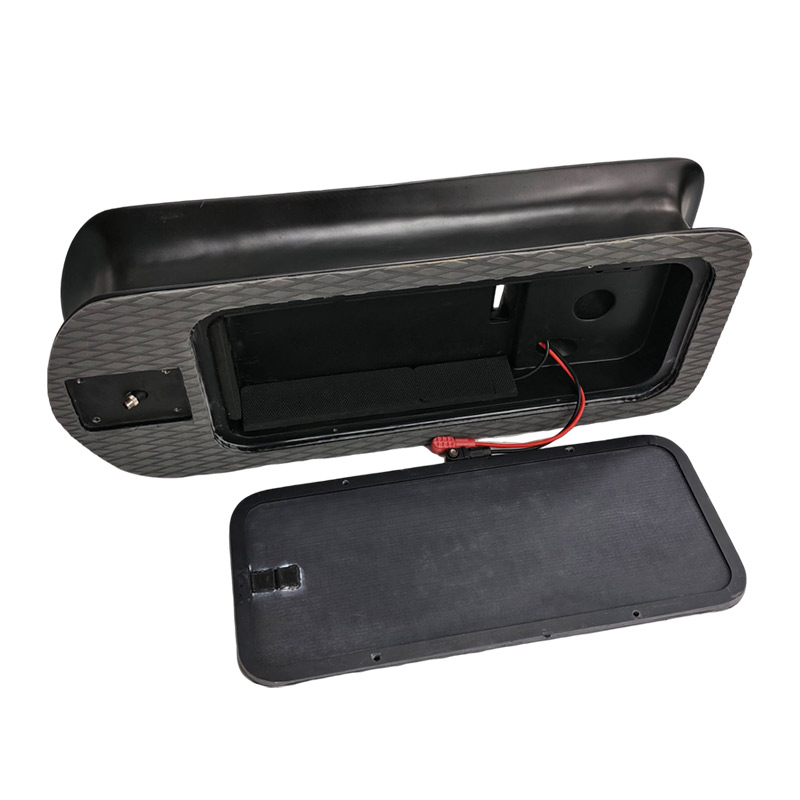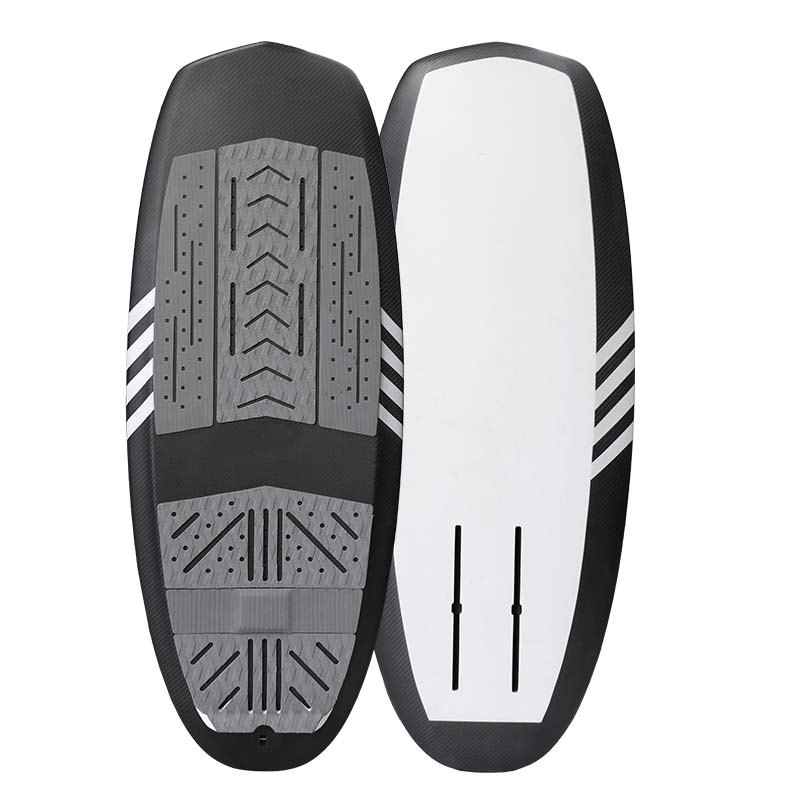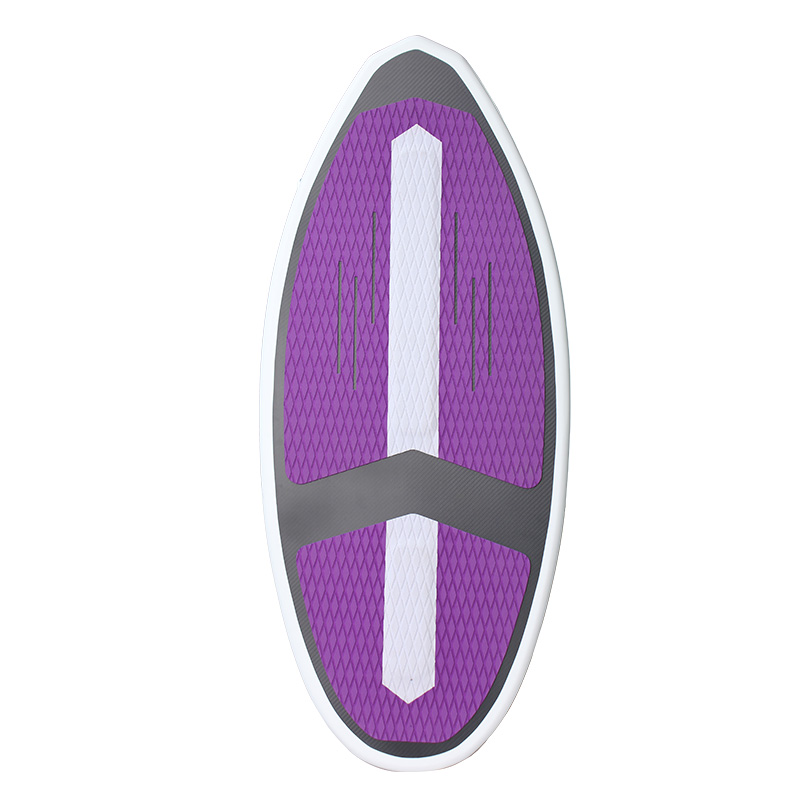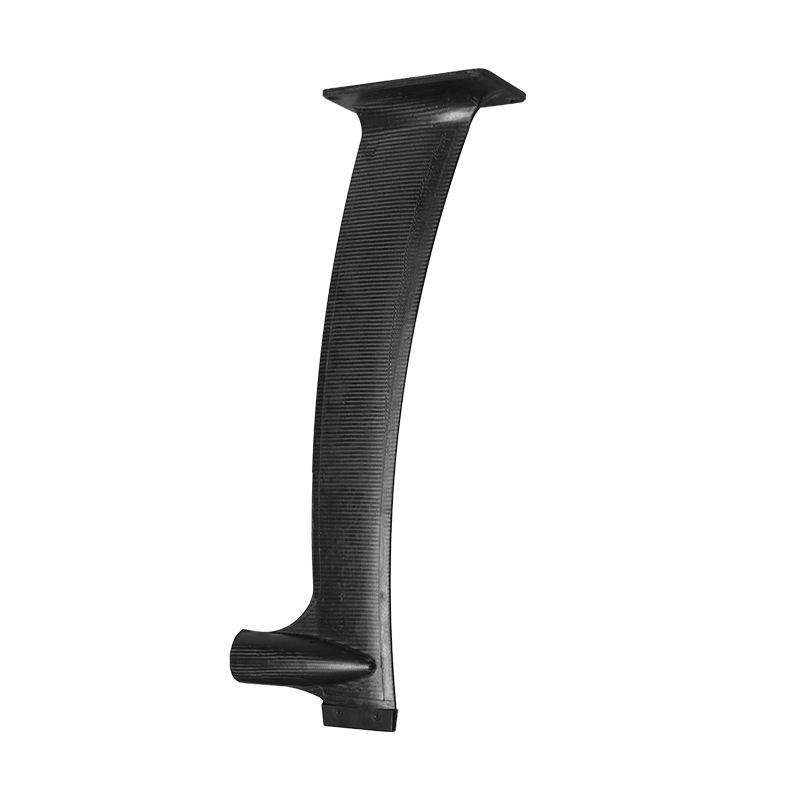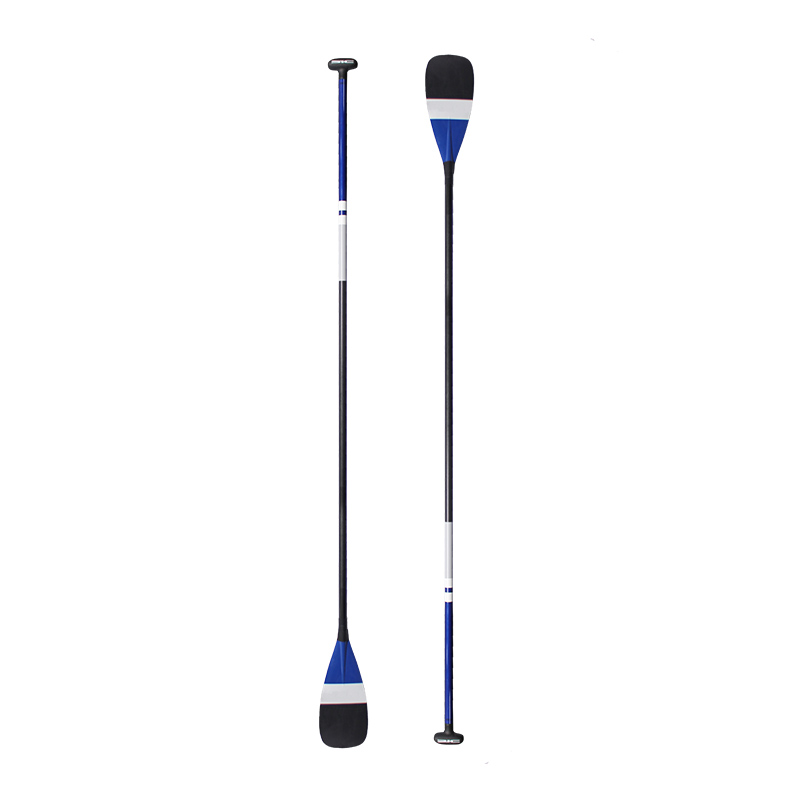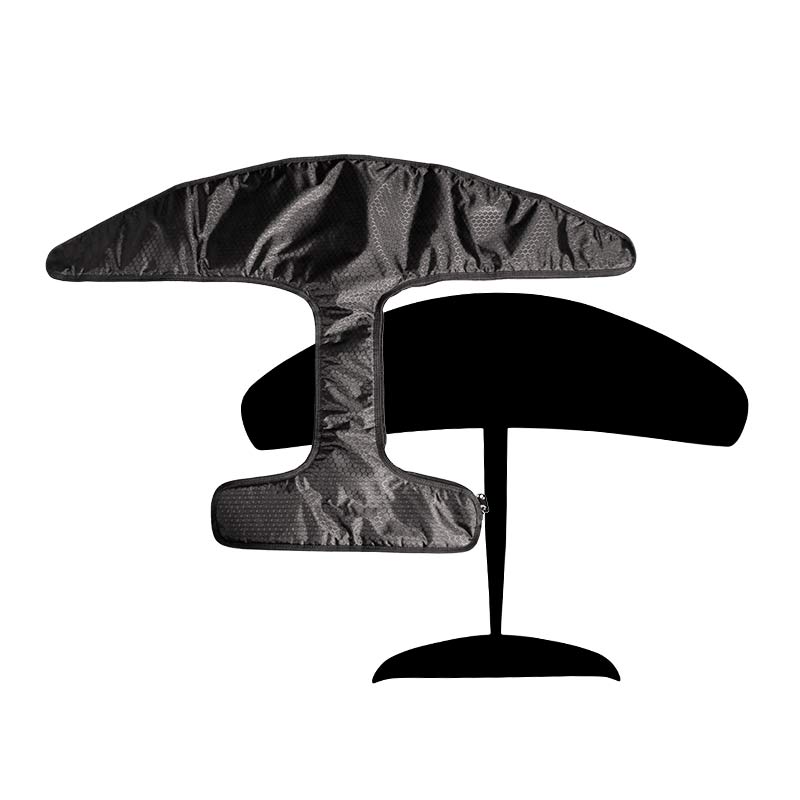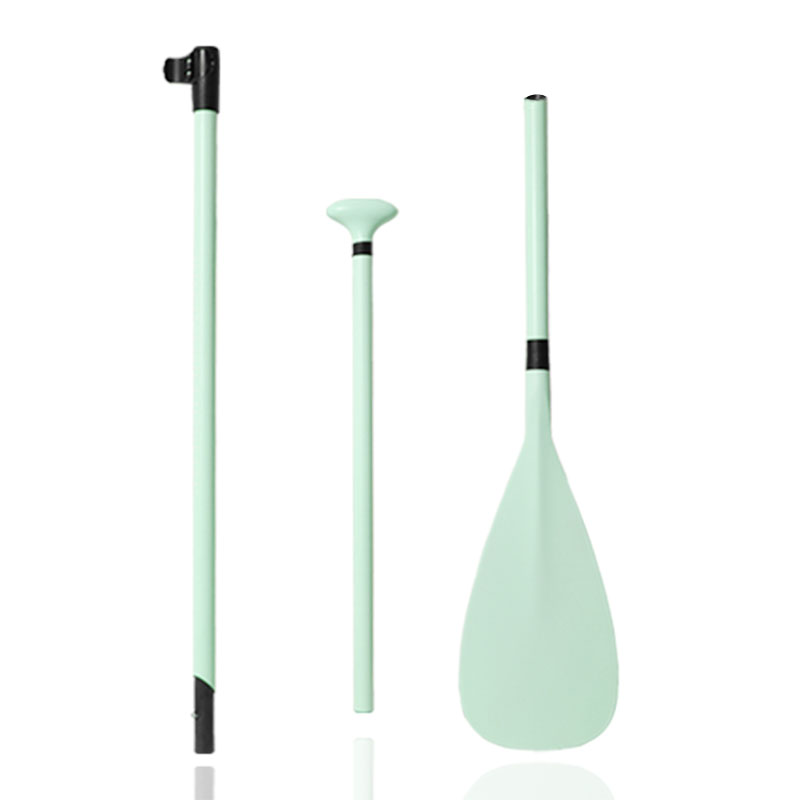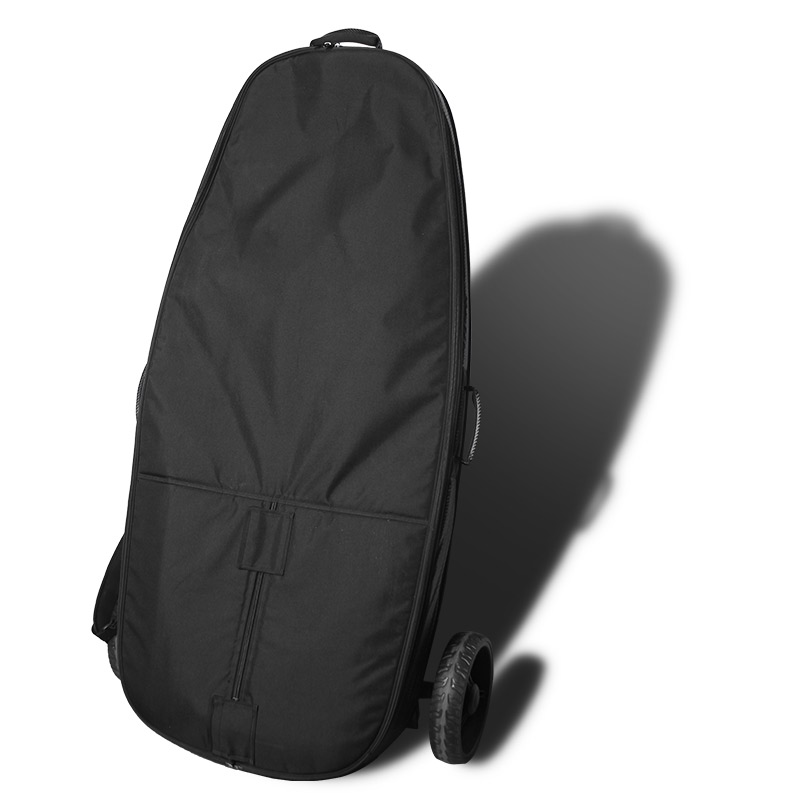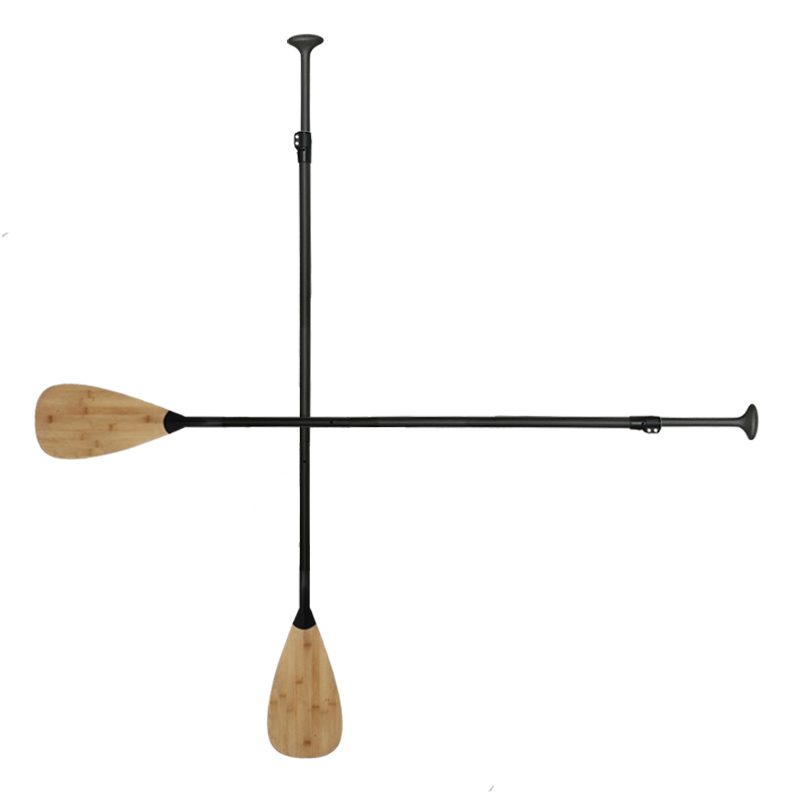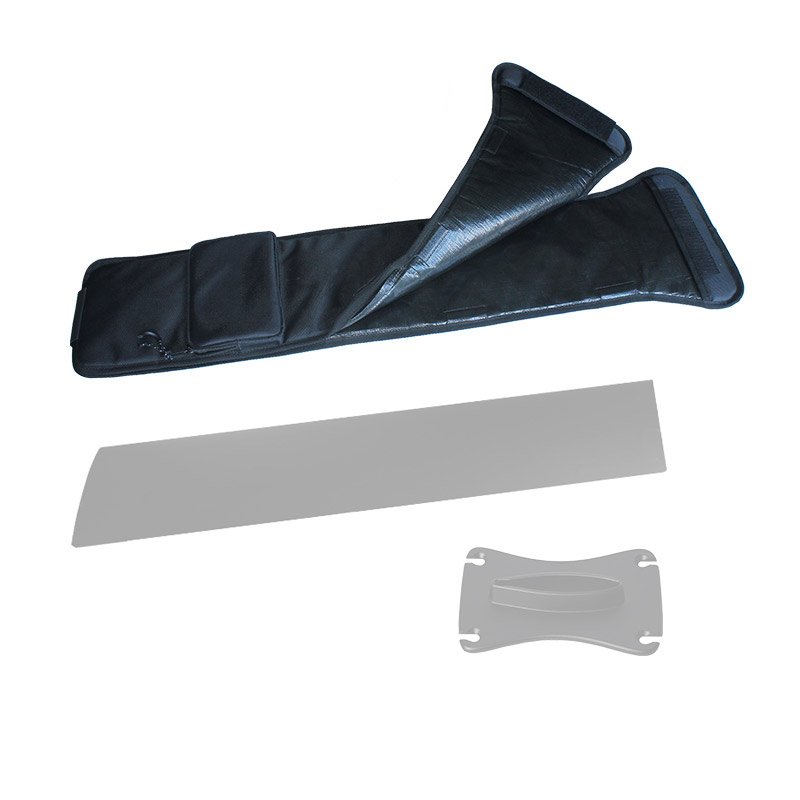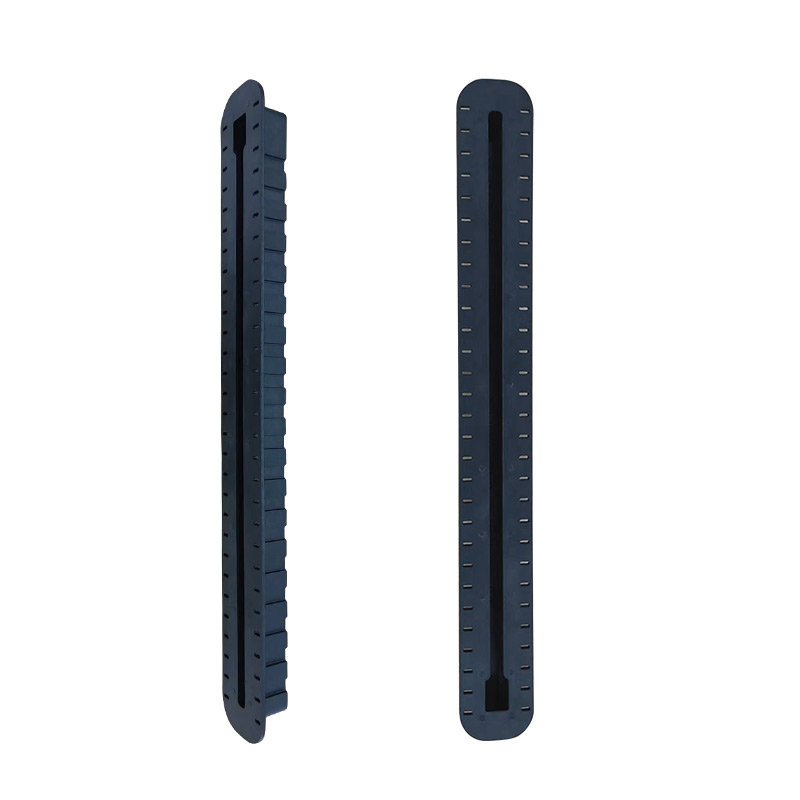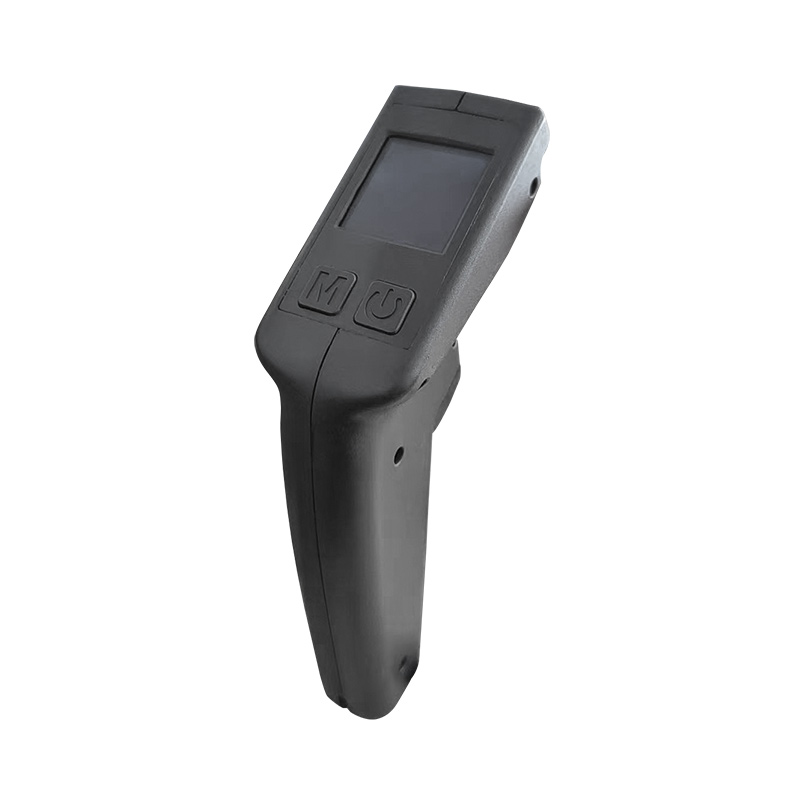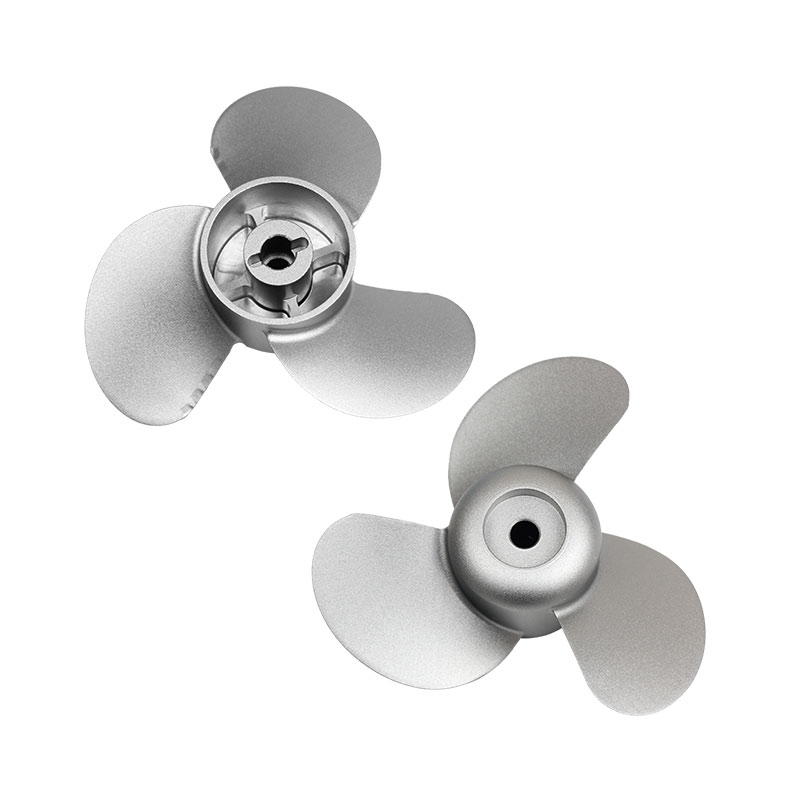Water skiing is an exhilarating sport that combines speed, skill, and adrenaline. However, without the proper safety measures, it can also be risky. Water skiing safety practice ensures that participants can enjoy the thrill of water skiing while minimizing the potential for accidents, injuries, and fatalities. Understanding the importance of safety practices is essential for both beginners and experienced skiers to ensure their own well-being and that of others on the water.
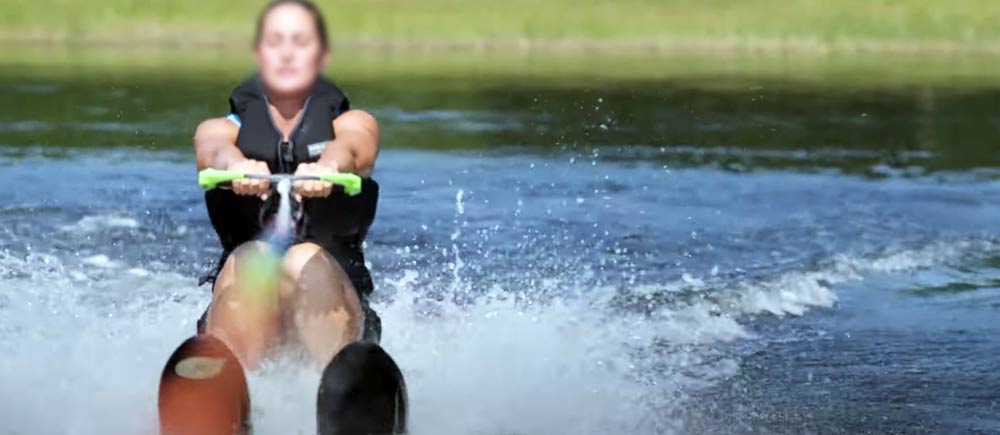
Common Water Skiing Injuries
Injuries can occur if proper techniques and safety measures are not followed. Understanding the most common injuries in water skiing can help skiers take proactive steps to avoid them and enjoy a safer, more rewarding experience on the water. From knee injuries to the risk of drowning, each potential injury requires specific precautions to minimize the chance of occurrence. Below, we’ll explore some of the most frequent water skiing injuries and share tricks for how to prevent them.
Knee Injuries:
One of the most common injuries among water skiers, often caused by improper technique or sudden falls. To prevent knee injuries, proper stance and avoiding sharp, jerky movements are crucial.
- Maintain a Proper Stance: To minimize the risk of knee injuries, it’s crucial to adopt the correct skiing stance. Keep your knees slightly bent and relaxed, with your weight evenly distributed between your legs. This stance allows your body to absorb the shock from waves and bumps without placing excessive pressure on your knees.
- Avoid Jerky Movements: Sudden, jerky movements while skiing, such as oversteering or attempting to pull yourself up too quickly, can cause stress on the knee joints. When getting up from a fall, use a gradual motion and let your skis glide smoothly over the water. Abrupt movements can result in hyperextension or twisting, leading to ligament damage.
- Engage Your Core and Legs: Focus on using your legs and core for balance and control. Keeping your upper body upright and stable will reduce the strain on your knees. By engaging your core muscles, you’ll help stabilize your body while skiing and allow your legs to absorb more of the force.
- Strengthen Your Knees and Legs: Off-water exercises can also play a significant role in preventing knee injuries. Strengthening the muscles around your knees, particularly the quadriceps and hamstrings, will provide better support for your joints. Regular leg workouts, stretching, and balance training will improve flexibility and strength, making it easier to absorb the impact of skiing.
- Wear Proper Gear: Knee protection gear, like knee pads or braces, can offer added support, especially if you’re prone to knee injuries or skiing in rougher conditions. Though not a replacement for proper technique, these protective items can help cushion falls and reduce the risk of impact-related injuries.

Back and Spine Injuries:
Poor posture or falls can result in back pain or more severe spinal injuries. Skiers should focus on maintaining a straight back, bending at the knees, and using their legs for support rather than their back.
- Maintain a Straight Back: A straight back is crucial when skiing to reduce the risk of spine-related injuries. Avoid hunching over or arching your back too much, as this can lead to strain on the lower back and spine. Always keep your back upright and engage your core muscles to provide support.
- Bend at the Knees: Bending your knees, rather than relying on your back for balance, helps distribute the force from the water more evenly. When you crouch down and keep your knees slightly bent, you allow your legs to absorb much of the impact while maintaining a more stable center of gravity.
- Use Your Legs, Not Your Back: When turning or adjusting your position on the water, focus on using your legs to move and not your back. Shifting your weight with your legs helps prevent any unwanted pressure or tension on your spine.
- Warm Up and Stretch: Before hitting the water, it’s important to warm up your back muscles and stretch properly. Flexibility in the spine and surrounding muscles will help you recover from falls more easily and reduce the risk of injury.
- Post-Ski Recovery: After skiing, take the time to stretch and cool down. Gentle stretches targeting the lower back, hamstrings, and core muscles will help maintain flexibility and prevent stiffness, reducing the likelihood of long-term injury.
Wrist and Shoulder Strains:
Holding onto the tow rope too tightly or improper body positioning can lead to strains or sprains in the wrists and shoulders. Relaxing the grip on the rope and allowing the body to flow with the water will reduce stress on these areas.
- Relax Your Grip: One of the most common causes of wrist and shoulder injuries in water skiing is gripping the tow rope too tightly. A tense grip not only causes strain on the wrist and forearm muscles, but it can also lead to shoulder and upper back discomfort. Try to maintain a relaxed, firm grip without overexerting pressure on the rope.
- Align Your Body with the Tow Rope: When skiing, your body should remain in alignment with the tow rope to ensure smooth and controlled movements. Avoid twisting your torso or pulling on the rope from an awkward angle, as this can lead to shoulder strain. Keep your shoulders back and relaxed, and let the boat do the work of pulling you along.
- Strengthen Your Shoulders and Wrists: Off-water exercises targeting the shoulder and wrist muscles will improve their strength and flexibility, reducing the likelihood of strains while skiing. Focus on exercises that improve your grip strength, shoulder stability, and overall upper body endurance.
- Use Proper Skiing Technique: Proper skiing technique can go a long way in reducing strain on your wrists and shoulders. Keep your arms straight and slightly bent, and allow your body to follow the motion of the water. Avoid overusing your upper body to control the movement of the skis—let your legs and core provide most of the stabilization.
Head and Neck Injuries:
High-speed falls, particularly in deep water, can result in head and neck trauma. Wearing a certified helmet and practicing proper falling techniques can significantly reduce the risk.
- Wear a Certified Helmet: A helmet can offer added protection in the event of a high-impact fall. Always choose a helmet that is certified for water sports and fits properly. While helmets are not required for every skier, they are recommended for those who are new to the sport or are skiing in rough conditions.
- Learn Proper Falling Techniques: Knowing how to fall safely is crucial for avoiding head and neck injuries. If you’re about to fall, try to fall backward or to the side rather than forward. Keep your arms in front of you to protect your head from hitting the water or the skis.
- Keep Your Neck Relaxed: Tension in the neck muscles can increase the risk of injury if you fall. Try to keep your neck relaxed and avoid stiffening your body as you hit the water. Staying loose can help prevent strain or compression injuries to the neck.
Cut and Abrasions:
Contact with the water’s surface or the skis themselves can cause cuts and bruises. Using protective clothing, like wetsuits, can help minimize abrasions.
- Wear Protective Gear: Wetsuits and rash guards can help prevent cuts and scrapes from occurring, especially if you’re skiing in rough waters or navigating over submerged obstacles. Protective clothing not only keeps you warm but also shields your skin from abrasions caused by falls or contact with the skis.
- Check Your Equipment Regularly: Inspect your skis, bindings, and other gear for any sharp edges or damage that could cause cuts. Regular maintenance ensures that your equipment remains safe to use and reduces the risk of injury.
Drowning:
The most severe risk in water skiing, often caused by falling in the water and being unable to surface. Wearing a personal flotation device (PFD) and practicing water recovery techniques are vital for preventing this risk.
- Wear a Personal Flotation Device : Always wear a Coast Guard-approved life jacket or PFD while skiing. Even experienced skiers can benefit from the added safety of a flotation device, as it helps you stay buoyant in case of a fall.
- Know Water Recovery Techniques: If you do fall, knowing how to recover quickly is essential. Practice getting back on your skis, or use the tow rope to pull yourself to safety. The quicker you can regain control, the lower the risk of being swept away or disoriented in the water.
Water Skiing Safety Practice Gear
To ensure a safe and enjoyable experience on the water, having the right gear is essential. Water skiing can be a thrilling activity, but without proper equipment, the risks of injury and accidents increase significantly. From life jackets to the right skis and bindings, each piece of equipment plays a crucial role in keeping you safe while maximizing performance. Here, we’ll go over the essential gear you need to have for safe water skiing.

Choosing the Right Life Jacket
A life jacket or personal flotation device (PFD) is one of the most important pieces of safety gear for any water skier. Not only does it keep you afloat in the water, but it also provides added protection in case of an accident. When choosing a life jacket, there are several key factors to consider:
- Fit and Comfort: The life jacket should fit snugly without being too tight. You should be able to move your arms freely for skiing, but it should not ride up when you’re in the water. A good fit is essential for keeping the life jacket secure and preventing it from shifting around during use.
- US Coast Guard Certification: Make sure that the life jacket is Coast Guard-approved. This certification ensures that the jacket meets safety standards for buoyancy and design, making it suitable for water skiing.
- Buoyancy: The PFD should provide adequate buoyancy to keep your head above water in the event of a fall. Ensure that the jacket is designed for water sports and can support your weight and provide sufficient flotation.
- Type of PFD: There are different types of PFDs, each designed for different activities. For water skiing, a Type III PFD, which is specifically designed for active water sports, is ideal. It provides a balance of buoyancy and mobility, allowing you to ski with comfort and safety.
- Visibility and Reflective Features: Look for life jackets with bright colors or reflective strips. This can make you more visible to other boaters and help in emergency situations.
Water Skiing Equipment
The right skiing equipment is essential for both performance and safety on the water. From skis to bindings to tow ropes, each component plays a role in your ability to ski efficiently while staying safe.
- Choosing the Right Skis: Skis come in a variety of shapes and sizes, and selecting the right ones depends on your skill level, body weight, and the type of water skiing you plan to do. For beginners, wider skis are generally recommended because they offer more stability. As you progress, you might opt for narrower skis, which provide greater speed and control. Be sure to choose skis that are designed for your specific weight and skill level for optimal performance. Unity Sports is professional surfing product manufacturer, welcome to contact us to custom the composite water ski board.
- Bindings for Support and Safety: Bindings are the part of the skis that secure your feet in place. Properly fitted bindings are essential for safety, as they prevent your feet from slipping out of the skis and allow you to maintain control. Adjustable bindings are recommended, as they can accommodate different foot sizes and allow for a secure, comfortable fit. For more experienced skiers, there are specialized bindings that provide extra support and responsiveness, but make sure they are not too tight, as this can restrict movement and cause discomfort.
- Tow Ropes: The Lifeline of Water Skiing: The tow rope connects you to the boat and is crucial for maintaining control and speed while skiing. When choosing a tow rope, look for one made of durable, high-quality materials like nylon or polypropylene, which are resistant to wear and abrasion. Tow ropes come in varying lengths, typically ranging from 55 to 75 feet. The length of the rope depends on the type of skiing and your personal preference. Longer ropes are often preferred for beginners, as they provide more room to maneuver and a smoother ride, while shorter ropes can give advanced skiers better control and speed.
- Rope Strength and Load Capacity: Ensure the rope can handle the weight and forces generated during skiing. Ropes are rated by strength (usually indicated in pounds) and should be chosen based on the weight of the skier and the type of skiing you are doing. Always check the load capacity before using the rope to ensure it’s strong enough for your needs.

Proper Footwear for Water Skiing
Although not always the first piece of gear to be considered, proper footwear plays an important role in ensuring both comfort and safety while skiing. Proper footwear not only helps you maintain control of your skis but also prevents foot injuries from sharp objects or falls.
- Water Ski Boots: Water ski boots or bindings are designed to keep your feet securely in place while providing flexibility for movement. Unlike traditional ski boots, water ski boots are generally softer and more flexible to allow for movement and comfort while skiing. They should fit snugly without restricting circulation and should offer ankle support to prevent twisting or injury.
- Adjustable Straps: Many modern water ski boots come with adjustable straps or Velcro closures, which allow for a customizable fit. This feature ensures that the boots stay in place while allowing you to adjust the fit for comfort during long ski sessions.
- Foot Protection: In addition to boots, consider wearing water socks or other protective footwear, especially if you plan to ski in areas with rocky or submerged obstacles. These accessories can help protect your feet from cuts and bruises caused by rough water conditions or objects in the water.
- Drainage and Ventilation: Look for ski boots with drainage holes or breathable materials. This will help keep your feet cool and dry by allowing water to drain out and prevent your boots from becoming waterlogged. Proper ventilation ensures your feet stay comfortable and prevents discomfort during long sessions.
- Fit and Comfort: Just like the bindings, comfort is key when it comes to footwear. Ill-fitting boots can cause blisters or restrict circulation, leading to discomfort or injury. Be sure to try on boots before buying, and if possible, choose boots that offer a snug but not tight fit.
Water and Weather Conditions
Before hitting the water, it’s essential to assess the environment to ensure safe skiing conditions. Factors such as water quality, wind speed, and weather patterns all affect both your performance and safety. Understanding these elements will help you make better decisions and reduce the risk of injury.
How to Assess Water Conditions for Safe Skiing
- Water Surface Quality: The condition of the water’s surface plays a significant role in how easy or difficult it will be to ski. Look for smooth, flat water when possible, as rough or choppy water can increase the likelihood of falls and make skiing more challenging, especially for beginners.
- Water Temperature: Cold water can cause shock to the body, especially if you fall in. Always assess the water temperature before skiing and ensure you’re dressed appropriately, such as in a wetsuit if the water is chilly.
- Water Obstructions: Check for submerged objects, rocks, or debris that may pose a danger while skiing. This is especially important in natural bodies of water. Skiing in open, clear water with no obstacles reduces the risk of collision or injury.
- Current and Flow: In rivers or lakes with a noticeable current, be aware that the current can significantly affect your skiing speed and control. Strong currents can make it harder to maintain balance or steer. Make sure to understand the current flow before beginning your session.
Checking Weather Forecasts and Wind Conditions Before Heading Out
- Wind Conditions: Wind can drastically impact your water skiing experience. Strong or gusty winds can make it difficult to control the skis, especially in the case of high-speed turns or when trying to maintain balance. Check the forecast for wind speed and direction—winds over 10-15 mph can make skiing less enjoyable and more dangerous.
- Precipitation and Storms: Avoid skiing during or immediately before a storm. Rain can make the water surface more slippery and harder to control, and thunderstorms pose serious risks due to lightning. Always check the radar for any nearby storm activity and postpone your session if thunderstorms are expected.
- Temperature and Visibility: Low temperatures can affect your reflexes and muscle control, increasing the likelihood of injury. Fog or poor visibility also heightens the risk of collisions with other skiers, boats, or obstacles. Ensure clear skies and adequate visibility before skiing.
Ideal Water Depth and Location for Skiing
- Water Depth: Skiing in shallow water is dangerous, as you risk striking the bottom or hitting submerged objects during falls. Aim for water that is at least 6-8 feet deep to ensure there’s enough space to fall safely and avoid any obstacles beneath the surface.
- Safe Skiing Areas: When selecting a location, always choose an area where other boats and swimmers are not present. The ideal spot should have enough space for the boat to maneuver freely without encountering obstacles or other hazards. Avoid areas near docks, rocks, or boat traffic.
- Wide, Open Spaces: Open, calm areas are the best for water skiing. The lack of obstructions and other boats gives you room to maneuver and reduces the risk of collision. Large lakes or designated water skiing areas are preferable to crowded rivers or narrow bodies of water.

Pre-Water Skiing Safety Practice
Safety begins before you even set foot on the water. Proper preparation and a clear understanding of the gear and conditions are essential to having a safe session.
How to Perform a Safety Check on Your Boat and Gear
- Boat Inspection: Always perform a thorough check of your boat before heading out. Ensure that the engine is functioning properly, the fuel is sufficient, and the boat is free from any obvious defects. Check that the tow rope is free of frays, knots, or damage. Make sure your boat is equipped with the necessary safety gear, including a fire extinguisher, first aid kit, and extra life jackets.
- Ski Gear: Inspect your skis, bindings, and tow rope for any wear and tear. Make sure the bindings are properly adjusted to fit your feet, and the skis are securely attached to the boat. Tow ropes should be checked for knots or tangles that could cause the skier to lose control.
- Safety Equipment: Ensure that you have the appropriate safety equipment on board. This includes life jackets for each person on the boat (and any passengers), a whistle or horn for signaling, and any other required safety gear based on your location’s regulations.
Establishing Clear Communication with Your Boat Driver
- Hand Signals: It’s essential to establish a set of hand signals with your boat driver before getting on the water. These signals allow you to communicate without shouting, especially when the engine is running. Common hand signals include the “thumbs up” for “go” or “everything is okay,” a raised fist for “stop,” and a wave for “slow down.”
- Verbal Communication: If possible, establish a system for communication over the engine noise, such as shouting or using a loudspeaker. If you fall or need to stop suddenly, make sure your boat driver knows exactly what to do.
- Pre-Skiing Safety Briefing: Take a moment before starting to discuss safety protocols, including the procedure for falling, signaling the driver, and how to recover from a fall. This ensures that both the skier and driver are on the same page and ready to react appropriately.
Setting Boundaries and Signals for Skier and Driver Safety
- Skier Safety Boundaries: Make sure to set clear boundaries for where the skier should go and where the boat should turn. This can prevent both the skier and driver from veering into dangerous areas, such as congested zones or areas with submerged obstacles. The skier should always keep a safe distance from the boat and should not ski in a way that puts them in harm’s way.
- Boating Traffic Considerations: Agree on the best direction to ski in relation to other boats, watercrafts, or obstacles. Always ensure there is adequate space between the skier and other boats or any wake activity from other watercrafts. When skiing in popular areas, keep track of other boat traffic to avoid potential collisions.
On the Water: Safe Skiing Techniques
Once you’re on the water, maintaining proper technique and focusing on safety ensures a fun and injury-free experience. Proper positioning, controlled movements, and knowing how to react in various situations are key to safe skiing.
How to Position Yourself for a Smooth Start and Landing
- Starting Position: When you first start skiing, the key is to stay relaxed and let the boat pull you up slowly. Start by sitting in the water with your knees bent and skis parallel to the surface. Keep the tow rope tight but not too taut. As the boat begins to pull, focus on keeping your arms straight and legs slightly bent.
- Standing Up: As the boat starts pulling, let the boat gradually bring you to a standing position by extending your legs and leaning back slightly. Avoid trying to stand up too quickly or forcefully, as this can lead to losing your balance or falling forward.
- Landing Safely: When coming to a stop, ease your knees and slowly bend them to absorb the shock of stopping. Avoid jerking the rope or creating sudden tension. Make sure to let the boat driver know when you are ready to stop, and be prepared for a soft, gradual landing.
Proper Techniques for Avoiding Falls and Minimizing Injury
- Stay Relaxed: Tension in your body increases the likelihood of losing balance or falling. Try to keep your arms and legs slightly bent and your body relaxed. Focus on staying in control and letting the ski do the work.
- Keep Your Weight Centered: Proper body alignment is key. Keep your weight centered over the skis, not too far forward or backward. Look ahead toward the boat and avoid turning your head, as this can cause unnecessary movements.
- Anticipate Falls: Despite the best techniques, falls are inevitable in water skiing. If you feel yourself losing control, try to fall in a controlled manner—keeping your limbs close to your body and avoiding stiffening up. Always fall backward or to the side to avoid potential head or neck injuries.
How to Safely Stop or Slow Down While Skiing
- Using the Tow Rope: If you need to slow down, let go of the tow rope for a moment, allowing your speed to naturally decrease. Alternatively, signal to the driver to reduce speed gradually.
- Falling: If you need to stop quickly due to an emergency, signal to the driver using the “raised fist” signal, and prepare yourself for a controlled fall into the water.
- Stop with Control: Always stop your skis in a controlled manner. When skiing at slower speeds, you can ease into a stop by gradually bending your knees and relaxing your posture. Avoid sudden jerks or movements that could lead to injury.
Staying Safe in Case of an Emergency
While water skiing is an exciting and enjoyable sport, it’s important to be prepared for emergencies. Whether you take a fall, experience a malfunction, or face an unexpected situation, knowing how to react quickly and calmly can help prevent injury and keep you safe on the water.
What to Do If You Fall: Safe Falling Techniques
- Keep Calm: The first step when you fall is to stay calm. Panicking can make the situation worse and increase the chances of injury. Relax, breathe, and assess your position in the water.
- Protect Your Head and Neck: Always protect your head and neck while falling. Avoid stiffening your neck or trying to brace the fall with your hands, as this can lead to serious injuries. If you feel yourself falling, try to keep your limbs close to your body to reduce the impact.
- Fall to the Side or Back: If you’re falling, aim to fall backward or to the side, rather than forward. This helps protect your knees, spine, and wrists from injury. If you are already falling forward, tuck your chin to your chest to reduce the impact on your neck.
- Avoid the Skis: If you’re falling, try to let go of the skis as soon as possible to avoid getting tangled in the rope or skis themselves. Once you’re in the water, release the tow rope to prevent being dragged.
How to React to a Boat or Skiing Incident
- Stay Aware of Your Surroundings: In case of an incident, always be aware of where the boat is, the rope, and other skiers around you. If you have fallen, signal the driver by raising your arm or hand to indicate that you need assistance.
- Know How to Signal: Use pre-established hand signals to communicate with your boat driver, such as a raised fist to signal “stop,” or a “thumbs up” to signal that everything is okay. This helps the driver understand your status without confusion.
- Emergency Procedures: In case of an injury or emergency, your boat driver should be trained in emergency response procedures. This includes knowing how to safely approach the skier in the water and assess the situation. Always have a plan for what to do in case of serious injury, such as calling for help or bringing the injured skier back to shore as quickly and safely as possible.

Importance of Having a Spotter and Why Skiing Alone is Dangerous
- Role of the Spotter: A spotter is a person who watches the skier while the boat driver focuses on driving. The spotter can help identify hazards, signal for stopping, and monitor the skier’s safety at all times. Having a spotter is essential for reacting to emergencies quickly.
- Dangers of Skiing Alone: Skiing alone, without a spotter or a driver’s assistance, is highly dangerous. If you fall and the driver does not see you, it could take longer to be rescued. Additionally, without someone monitoring your position and movements, there’s a higher risk of injury or becoming separated from the boat.
- Legal Requirements: In many areas, having a spotter on the boat while towing a skier is required by law. Always make sure you are following local regulations and ensure there is someone dedicated to keeping an eye on the skier during the session.
Conclusion: Making Safety a Priority Every Time You Ski
Water skiing is an exciting and dynamic sport, but safety should always be your top priority. By following safety guidelines, wearing the proper equipment, staying aware of environmental conditions, and having a plan in place for emergencies, you can enjoy skiing while minimizing risks.
Why Regular Safety Practices Lead to a Better Skiing Experience
Confidence and Enjoyment: When you consistently practice safety, you’ll feel more confident on the water, leading to a more enjoyable experience. Knowing that you have the right gear, skills, and knowledge to handle any situation allows you to focus on having fun.
Reduced Risk of Injury: Regularly adhering to safety protocols helps reduce the risk of accidents and injuries. Whether it’s choosing the right equipment, assessing the water and weather conditions, or knowing how to react in an emergency, staying prepared is key to a safe and successful session.
Key Takeaways for Safe Water Skiing
- Always wear a properly fitting life jacket and ensure all gear is in good condition before skiing.
- Assess water conditions, weather forecasts, and location for safe skiing.
- Practice good skiing techniques, focus on body position, and know how to fall safely.
- Always have a spotter and communicate clearly with your boat driver.
- Take time to recover after skiing, stay hydrated, and stretch to prevent injury.
- Make safety a priority every time you ski to ensure a fun, exciting, and injury-free experience.



